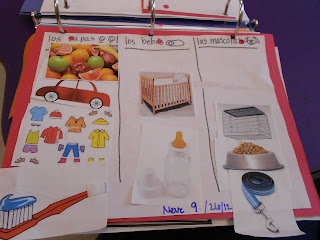Last weekend, I wanted to try a couple new fine motor games with my daughters that I am going to share with you here!! The activities were so simple with things that I already had around the house and it took me less than 3 minutes to put them all together. There are also a couple of homemade fine motor games that some teachers did too that I wanted to share. ENJOY!!
Pipe Cleaners and Colonders:
I got some colorful pipe cleaners at the Dollar Tree...
...Also got two colonders that are used for draining pasta or washing fruit.
The holes are perfect for placing the pipe cleaners inside.
Because my girls are still developing this skill, I set up this invitation to play by putting the pipe cleaners inside the holes myself. Then they removed them.
They both tried very hard to thread the pipe cleaners in the holes. It'll just take some practice!!
**********************************************************************************
Straws and Oatmeal container
I had an oatmeal container that we were going to recycle, but then I decided to cut some holes in the lid. Some holes were larger than others (not on purpose) but it ended up working out great in the long run.
Since the straw were too long for the oatmeal container, I cut them in half so they could get started.
I only had one oatmeal container which also worked out fine. The girls had to cooperate and share the activity and they did a great job.
One by one, they put the straws in the holes. Over and over and over again....
Sedona would sometimes try to fit two straws in one hole which actually was a great spatial/math challenge.
Acadia loved the game too!! She played it for almost half an hour!!
Best friends forever!!
***********************************************************************************
Stress Balloons
Gala in the Preschool classroom in Needham made these Stress Balloons to manipulate.
(Check for any Latex Allergies before adding this to your classroom.)
She took some balloons and poured sand inside.
She even had some with beans inside.
***********************************************************************************
Homemade Sensory Bags
How many times have we seen sensory bags done?? Here's a wonderful adaptation that Carmenza and Lucy created in their toddler class in Needham!!
Take a bag and fill with hair gel. You can add some glitter too!! Tape the opening of the bag to seal it closed.
Then TAPE the bag to a strong piece of cardboard so that it stays flat and the children can manipulate it. They can also put stamps on the top of the sensory bags, they can pretend to write circles or letters with their fingers too!! So fun!!
Jacie
























































































